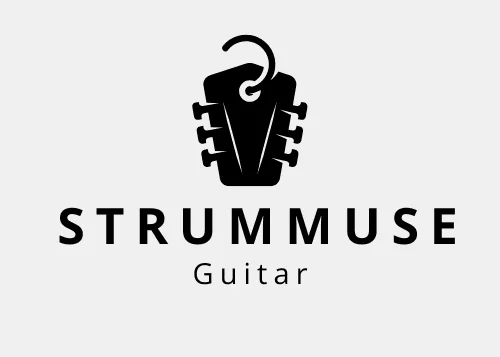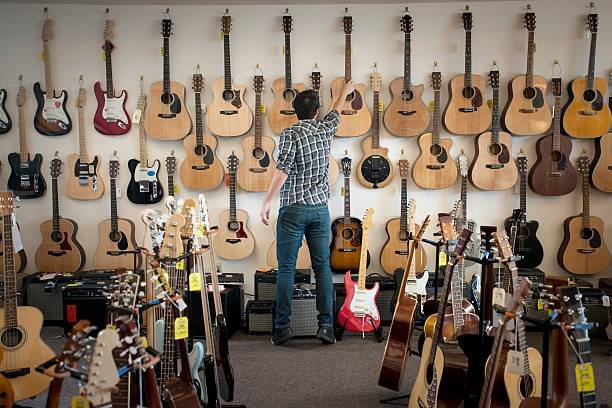Decide your budget, body size, and style. Play or watch demos. Inspect the neck and action. Check return policies, warranties, and setup costs. Trust your ears—then your eyes.
1. Why Planning Your Purchase Matters
“Just grab the one that looks coolest” is how most of us used to shop. But in 2025, the smart guitarist knows that things to know before buying guitar go far beyond color and price tag. A well‑planned purchase:
- Saves money on unnecessary upgrades
- Keeps motivation high (you like the sound and feel)
- Avoids painful long‑term issues like tendon strain from an oversized neck
- Makes resale easier if you upgrade later
Related read: The Ultimate Guide to Acoustic Guitars for Beginners: Choosing the Right One & Price Insights (2025)
🎸 StrumMuse Student Tip: One of our students, Aanya, once returned a stunning sunburst electric after realizing she couldn’t reach the upper frets comfortably. Specs matter!
2. Understand Your Player Profile
Before we even open a browser tab—or step into a music store—get crystal clear on you:
| Player Factor | Why It Matters | Self‑Check Questions |
|---|---|---|
| Genre Goals | Pickups, wood, and string gauge change tone dramatically. | “Do I need twang for country? Bite for metal?” |
| Hand Size & Strength | Neck width and scale length affect comfort. | “Can I cleanly fret an F barre on a 1.75” nut?” |
| Practice Environment | Acoustic sound levels vs. amplified volume. | “Will apartment neighbors complain?” |
| Budget vs. Long‑Term Plan | Extra for pro setup, case, and future upgrades. | “Can I stretch $50 more now to save $100 later?” |
Write these answers down—it’s the first of many things to know before buying guitar and it anchors every decision that follows.
3. Things to Know Before Buying Guitar Online
Shopping online offers dazzling variety and pandemic‑proof convenience—but also hidden traps. Below is a roadmap (about 600 words) to safe scrolling.
3.1 Confirm Authentic Retailers
- Check for Authorized Dealer Badges. Brands like Fender or Yamaha list partners on their sites.
- Read domain names carefully. “G1bson‑usa.shop” is not Gibson.
- Look for secure checkout (https). Payment pages must be encrypted.
Pro tip: StrumMuse keeps an updated “Trusted Online Guitar Store” that you can bookmark.
3.2 Read the Return & Shipping Fine Print
- Return window length. Aim for at least 30 days.
- Who pays shipping both ways? A heavy dreadnought can cost $75 to send back.
- Restocking fees. Anything over 10 % is steep.
- Damage timeline. Some stores require you report shipping damage within 24 hours. Snap photos as you unbox.
🎸 Mini-Story: A reader named Rishi once bought a beautiful guitar from an international site, only to find a warped neck—and had to pay ₹5,000 just to return it. Always read that fine print.
3.3 Watch or Request HD Demo Videos
If you can’t play it, watch someone who does. Seek:
- Close‑ups of neck relief under string tension.
- Clean chords up the neck and bends above the 12th fret. Buzzing? Pass.
- Unedited audio. No reverb hiding flaws.
3.4 Factor in Setup Costs
Many factory guitars ship with high action. Budget $40‑$80 for a professional setup—non‑negotiable for comfort. Add that to cart mentally.
3.5 Trust (Verified) Reviews, not Hype
- Filter by “Verified Purchase.”
- Skim 3‑star reviews; they’re often the most honest.
- Watch for copy‑paste patterns—a red flag discussed later.
Use this checklist whenever you shop. Repeat the phrase aloud: These are the things to know before buying guitar online. It saves cash and headaches.
4. Things to Know Before Buying Guitar Offline
Brick‑and‑mortar shops offer tactile joy. Still, you need strategy.
4.1 Test‑Drive Like a Pro
- Tune first. If it won’t stay in tune during a 5‑minute demo, walk away.
- Evaluate ergonomics sitting and standing. Strap height changes everything.
- Check fret edges for sharpness. Run a cotton ball along the neck—if it tears, the frets need filing.
- Play across dynamics. Strum hard, fingerpick soft, slide, bend. No buzzing allowed.
🎸 StrumMuse Student Tip: “Take your own strap and pick,” says Aarav, one of our intermediate students. “You’ll get a real feel for how it responds to your technique.”
4.2 Bring a Friend (or Your Phone)
Record the room’s natural sound. Later A/B the clip against other guitars. If you’re shy, a friend can play while you stand in front—your audience’s perspective.
4.3 Ask About “Case Candy”
Some stores throw in:
- A free humidifier
- First‑year setups
- Strap and gig bag
These extras offset price differences vs. online.
4.4 Negotiate Politely
- Use competitor prices on your phone as leverage.
- Bundle accessories—strings, picks, stand—for 10 % savings.
- But never rush. Walking away is power.
Remember, another of those crucial things to know before buying guitar offline is energy: if the staff are pushy or belittle your questions, that’s your cue to exit.
5. What to Avoid When Buying Guitar
- Impulse purchases on vacation. Wood reacts to climate; that Bali bargain could warp in Kolkata humidity.
- Too‑good‑to‑be‑true vintage deals listed without serial numbers.
- Ignoring weight. Anything over 9 lbs (4 kg) will wreck your shoulder on stage.
- Skipping warranty registration. You usually have 30 days—mark it on your calendar.
Avoiding these missteps takes you several steps closer to pro territory—and yes, they’re also things to know before buying guitar for any skill level.
6. Red Flags When Buying Guitar
| Red Flag | Why It’s Bad | Quick Test |
|---|---|---|
| Visible finish cracks near the neck pocket | Indicates structural stress | Press gently—does the gap widen? |
| Misaligned tuner posts | Causes tuning instability | Sight down the headstock |
| Loose truss‑rod cover screws | Could hide stripped threads | Ask to inspect truss‑rod adjustment |
| Seller insists “It just needs new strings” | Excuses fret buzz or warped neck | Request to restring on the spot |
If you spot two or more, run. Share these warnings with friends; they’re universal things to know before buying guitar.
7. Common Mistakes When Buying Guitars
- Over‑research paralysis. Yes, irony. Set a decision deadline.
- Underestimating amplifier quality. A $1,000 guitar through a $50 amp? Waste.
- Neglecting resale value. Obscure brands tank fast.
- Assuming all woods age the same. Cedar tops open up; maple stays bright.
- Forgetting ergonomics for smaller players. 3/4‑size models aren’t just for kids—see .
We’ve said it five times already, but here’s number six: things to know before buying guitar include learning from others’ blunders.
8. FAQs
Q1. Is an all‑solid‑wood guitar always better than a laminate?
Not necessarily. Solid wood resonates richly but is fragile in humidity swings. A high‑quality laminate may be safer for touring musicians.
Q2. How much should I spend on my first guitar?
Budget between ₹10,000–₹18,000 ($120–$220) for decent playability and resale value. Cheaper axes can stunt progress.
Q3. Acoustic‑electric vs. microphone—what’s better for home recording?
For silent late‑night tracking, an onboard pickup is gold. For studio‑level warmth, a condenser mic still wins.
Q4. Should I buy used?
Used can offer 30 % savings. But you must inspect fret wear, neck warp, and electronics crackle. Use our red‑flag table above.
Q5. How do I test electronics online?
Ask the seller for an unedited loop of the pickups going direct in. Listen for hum, uneven output, or dead pots.
Q6. How often should I replace factory strings?
Immediately for budget guitars; builders often throw on cheap stock.
For deeper dives, bookmark StrumMuse’s Guitar Fretboard guide.
9. Author’s Note & Key Takeaways
I wrote this guide after two decades of teaching players who regretted their first (and sometimes third) guitar purchase. Whether you’re shopping online from your couch or walking into your local music store, these things to know before buying guitar are rooted in real experiences—including my own.
🎸 True Story: I once bought a beauty from a tiny Parisian shop while traveling, only to return to India and watch it crack within two months. My expensive souvenir turned into expensive firewood.
Be smart, be skeptical, and don’t ignore your gut.

